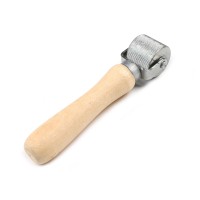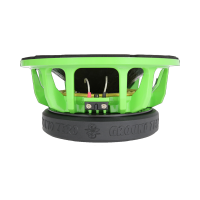Subwoofer Focal SUB 10 SLIM
subwoofer, Ø 10", 230 W RMS, 85 dB (SPL 2.83V/1m), 4 Ω
More about the product
More about the product
We will help you with your purchase
- Use our consulting room
- You can return the goods to us within 14 days
- Try the product at our store
Subwoofer Focal SUB 10 SLIM
The SUB 10 SLIM was designed and developed in France and utilizes Focal's audio expertise. This subwoofer with a 10" (25 cm) polypropylene diaphragm provides excellent bass reinforcement for any on-board audio system. It has a single voice coil architecture that ensures simplicity and efficiency. Thanks to its very small depth, this product is easy to install in confined spaces such as the sides car trunk.Main features
- Shallow depth, easy installation.
- Deep and powerful bass.
- Efficiency in a closed box, from 10 l.
- Robust design, steel frame.
- Excellent power handling.
| Catalog number | SUB 10 SLIM |
| Brand | Focal |
| Links | Official web presentation |
| RMS powerThe RMS power of the subwoofer is the constant power of continuous use of the subwoofer. If the power is exceeded for a longer period of time, irreversible damage may occur, or to burn out the voice coil of the subwoofer. | 230 W |
| Max. (maximum performancePeak performance , which the subwoofer can play momentarily (approx. 0.5 s), for example when hitting drums in a song. If the maximum power is exceeded, damage can quickly occur, or to burn out the voice coil of the subwoofer. | 460 W |
| Sensitivity (SPL 2.83V/1m)Subwoofer sensitivity or efficiency. The sensitivity of the subwoofer is given in decibels (dB) and, in simple terms, means that the higher the value, the lower the demands on the power of the amplifier. This is a de facto rating of how a subwoofer converts watts to sound. Sensitivity ratings are in noise level measured at 1 meter from the subwoofer using 1 W (watt of power) or using 2.83 volts at the source at 1 meter. A higher decibel level means the subwoofer is louder with less power. For every 3 dB increase in sensitivity, the subwoofer requires half the power to reproduce the same volume. For example, if an 88 dB subwoofer needs 300 Watts to produce a certain volume, then a subwoofer with 91 dB sensitivity needs only 150 Watts to reach the same efficiency. | 85 dB |
| ImpedanceImpedance - measurement of electrical resistance. When buying a subwoofer, it is very important that everyone make sure that the impedance matches the amplifier that you are connecting to it. For subwoofers with a double voice coil, we recommend following the information in the advice center! Example: A 2 Ohm subwoofer cannot be connected to an amplifier that is only stable up to 4 Ohms. A 4 Ohm subwoofer can easily be used on an amplifier that is stable up to 2 Ohms. Connecting a 4 Ohm subwoofer to an amplifier that is stable up to 4 Ohms also without problems. The most common subwoofer impedance is 4 Ohm. | 4 Ω |
| Subwoofer diameterThe diameter of the subwoofer is indicated on the screw holes. The overall outer diameter of the subwoofer is usually 1-2 cm wider, depending on the size category of the subwoofer. For a 30 cm subwoofer, the outer diameter incl. protective rubber 31.8 cm and in the 25 cm subwoofer it is 26.5 cm incl. protective rubbers. | 250mm (10") |
| Fs - resonant frequencyFs - is the lower resonant frequency. This parameter is the de facto free air resonant frequency of the subwoofer. Simply put, it is the point at which the weight of the subwoofer's moving parts equals the force of the subwoofer's suspension while it is in motion. If you've ever seen a piece of string start to hum uncontrollably in the wind, you've seen the effect of reaching a resonant frequency. The weight of the moving parts and the stiffness of the suspension (surround and spider) are key elements that affect the resonant frequency. As a general rule, a lower Fs indicates a subwoofer that would be better at reproducing low frequencies than a subwoofer with a higher Fs. However, this is not always the case, as other important parameters of the subwoofer also enter the resulting sound. | 25 Hz |
| Vas - equivalent volume of airVas - represents the volume of air that, when compressed per cubic meter, acts with the same force as compliance (CMS), suspension in a certain subwoofer. Vas is one of the most complicated parameters to measure, as changes in air pressure are affected by conditions of relative humidity and temperature. Another way to describe what VAS is: try using a subwoofer and find a baffle that is the right size to return the air with the same stiffness to the same resonance. The size of this box is equal to you. There are, of course, other parameters, but they are not so necessary for the exact calculation of the enclosure. Resonance frequency and Q-parameter values are also important when building enclosures. | 37 I |
| QesElectrical Q-factor of driver is the electrical quality factor (electrical damping). If the subwoofer coil moves in a magnetic field, it generates its own current that counteracts its movement. Qes is a dimensionless parameter and the lower the number, the higher the generated current and the more damped the coil movement, thus reducing the total current flowing through the coil, the deflection and the sensitivity around the fs resonance. It varies in values from 0.08 to 0.6, in the extremes, for ordinary universal converters, even 20. Subwoofers with too low a Qes value, a very damped system, are not suitable for certain types of enclosures. | 0.708 |
| QmsMechanical Q-factor of driver is a mechanical factor of quality (mechanical damping). These are mechanical losses affecting (damping) the movement of the subwoofer membrane. Qms is a dimensionless parameter and the higher the number, the smaller the losses, i.e. the deviation and sensitivity in the lower band is also higher, it ranges around 0.4 - 25. | 6.96 |
| QtsTotal Q-factor of driver is a total quality factor, it includes both parameters Qes and Qms (electrical Qes and mechanical Qms). It varies in values from approx. 0.08 to 0.6, exceptionally up to 3. The Qts of the subwoofer is calculated in the same way as, for example, a pair of parallel resistors, so the result is decisively influenced by a smaller value that cannot be exceeded, which is usually Qes. | 0.643 |
| Subwoofer voice coil diameterThe larger the diameter of the voice coil, the more load capacity the subwoofer has, in layman's terms. | 20 mm |
| Subwoofer diaphragm materialThe specific material from which the subwoofer membrane is made. | Polypropylene |
Product comments
Evaluation
ask us































